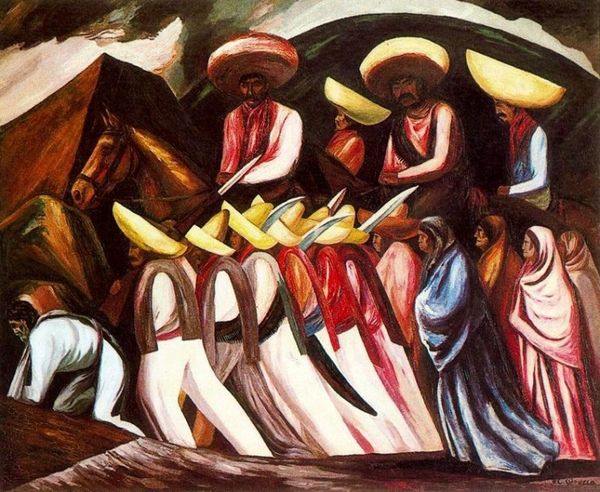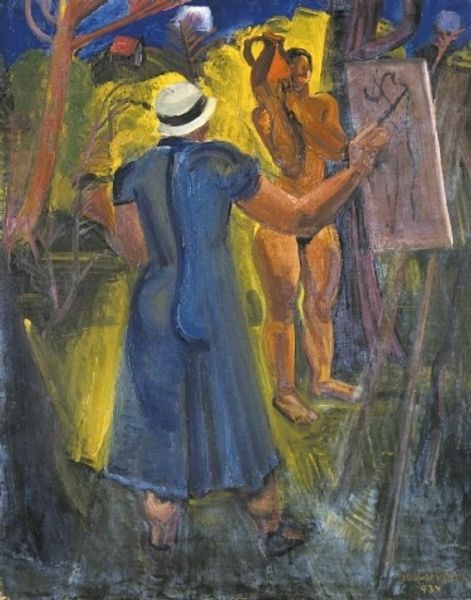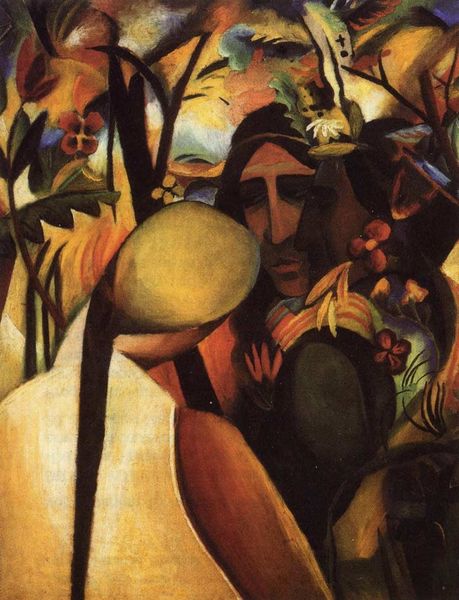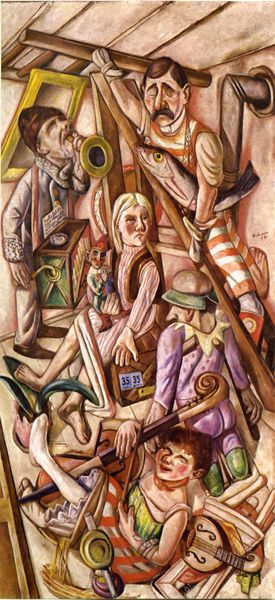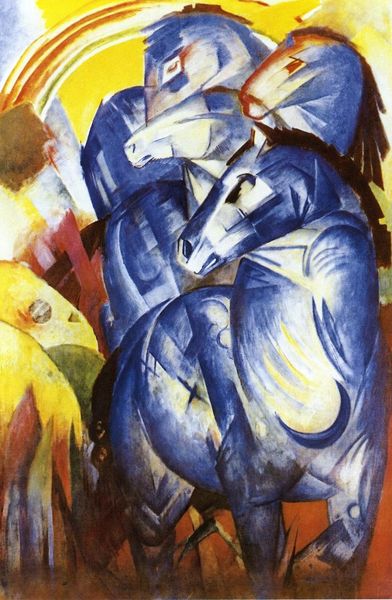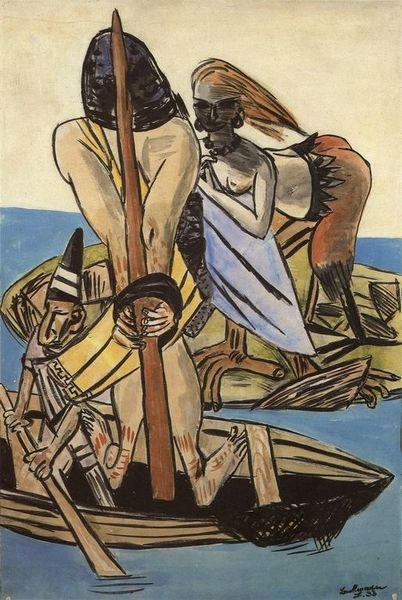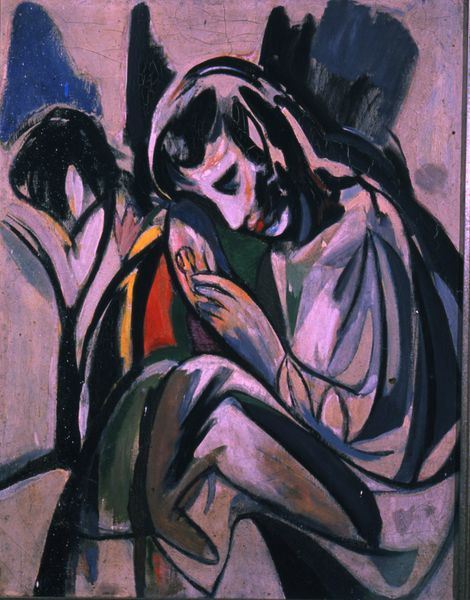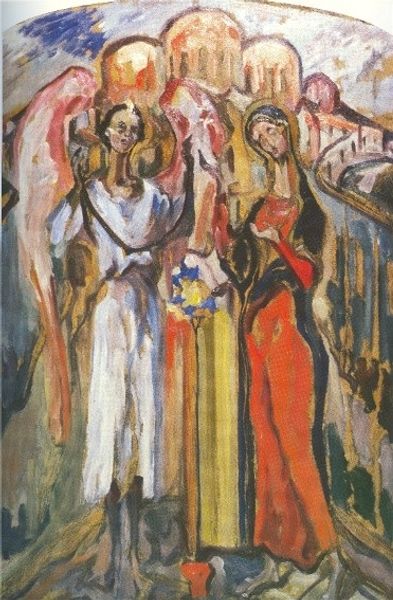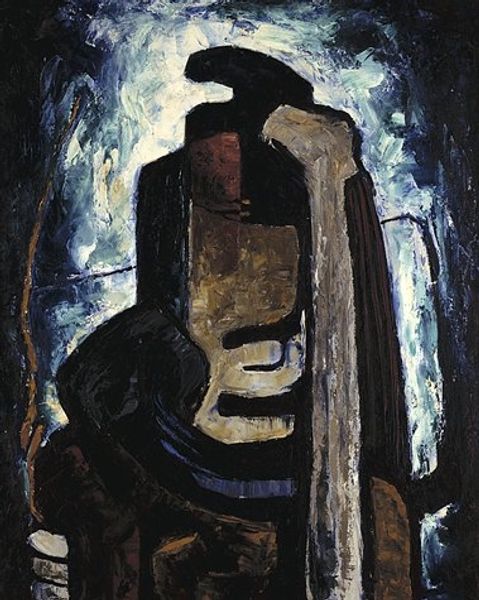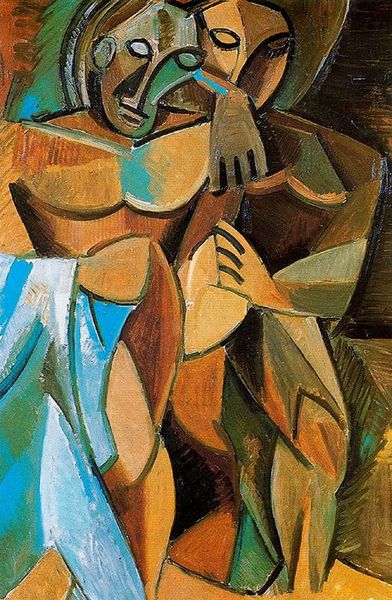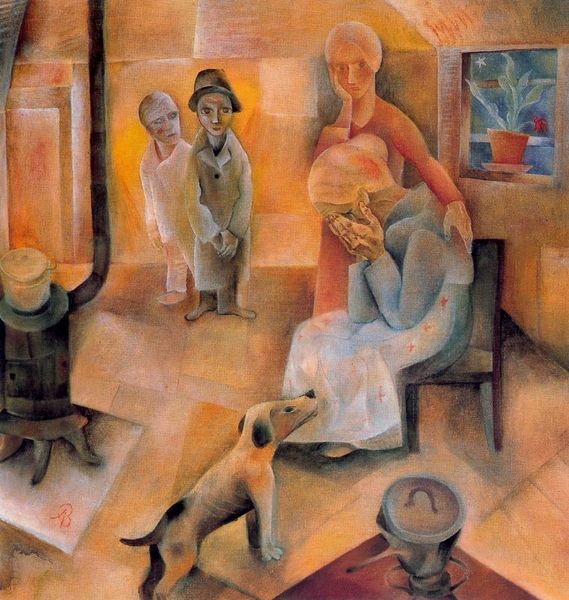
painting, oil-paint, mural
#
portrait
#
narrative-art
#
painting
#
oil-paint
#
figuration
#
oil painting
#
expressionism
#
mexican-muralism
#
history-painting
#
mural
#
expressionist
Dimensions: 178.4 x 122.6 cm
Copyright: Public domain
Curator: The stark composition strikes me immediately – the angles are almost brutal. Editor: Indeed. Here we have José Clemente Orozco's "Zapata," painted in 1930. Orozco, a prominent figure in the Mexican Muralism movement, captures the revolutionary fervor and, I think, inherent tragedy of the era. Curator: Tragedy is right. The supplicant figures at the bottom contrast so strongly with the rigid figure of Zapata, and the dark outlines accentuate the weight of the looming, armed figure. There's almost a geometric quality to the placement of forms. Editor: Zapata as symbol, almost Christ-like but armed, as the bringer of justice or perhaps vengeance; recall how revolutionary figures are often portrayed as near messianic. And observe how Orozco frames Zapata – with the blade, the hats like halos – to elicit power. This potent iconography draws on deep cultural archetypes. Curator: Yet there's also a raw vulnerability, notably in the muted palette, particularly in the robes. Notice how the impasto adds another textural layer. The brushstrokes lend movement. It's not just about symbols. The materiality is crucial. Editor: Agreed, it speaks to the broader theme of upheaval and sacrifice. These kneeling figures resonate with the millions who sought liberation and suffered in its pursuit. Consider their hands—outstretched in desperation, supplication. I see generational trauma embedded there. Curator: Interesting point. Focusing on form, one might see their upward reach simply as a compositional element driving the eye toward Zapata, grounding the apex in triangular unity of victimhood with oppressor. I think it would have had much impact in person as a mural. Editor: It makes you wonder, doesn't it, about the lasting reverberations of these cultural emblems and conflicts. Orozco leaves you no easy answers. Curator: It's the dynamic push-and-pull of formal properties, material reality, and historical representation. This creates enduring complexity, I think.
Comments
No comments
Be the first to comment and join the conversation on the ultimate creative platform.
